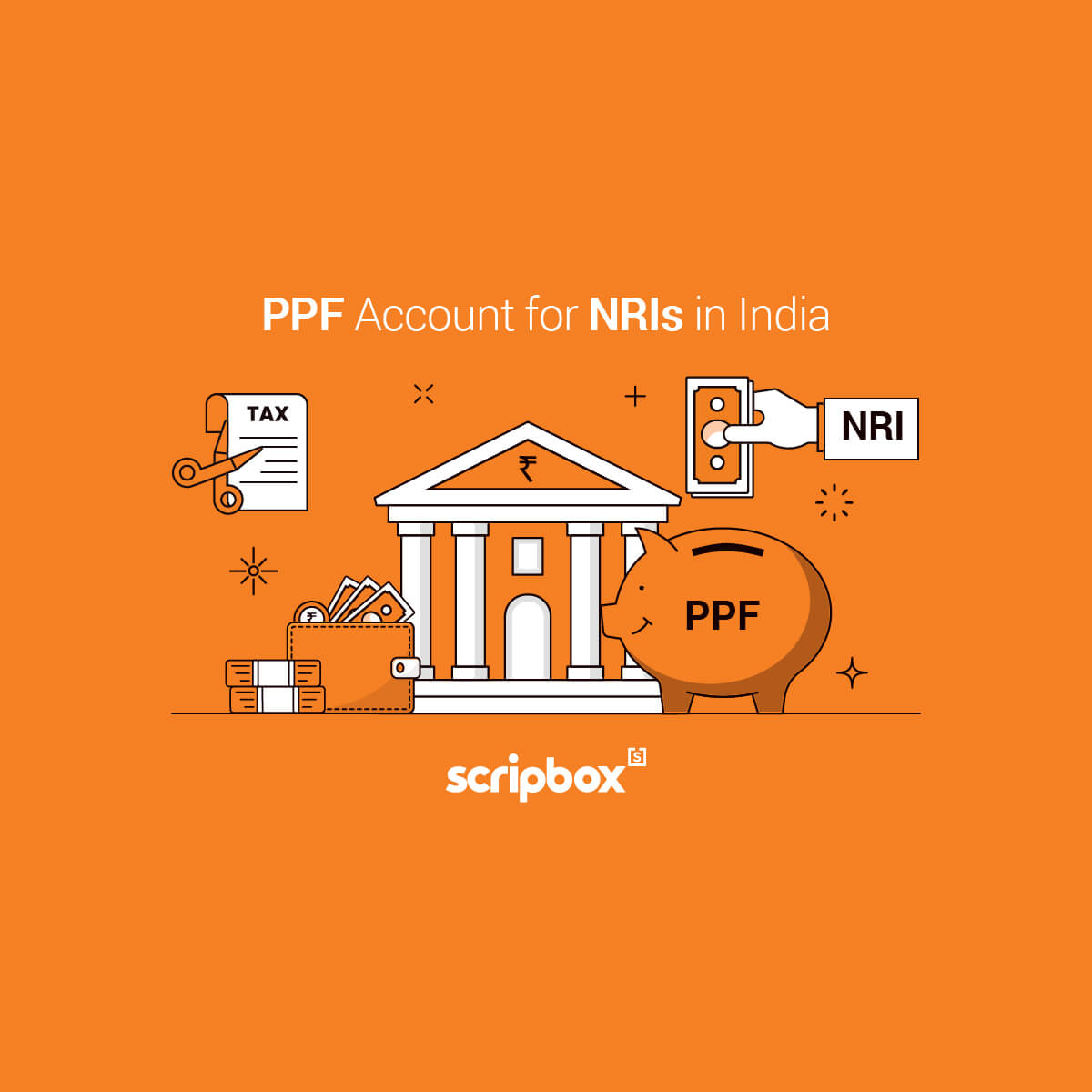The small savings scheme interest rates are decided by the Ministry of Finance every quarter. The interest rates of small saving schemes are announced every quarter. This article covers various small savings schemes and small savings scheme interest rates in detail.
What is a small saving scheme?
Small saving schemes are savings products that are launched and administered by the Government of India. These schemes encourage individual investors of all age groups to save regularly. Most of these savings schemes are backed by the government and hence are considered as safe investments. The ministry of finance decides the small savings interest rates on a quarterly basis. Few of the popular small saving schemes are the Public Provident Fund (PPF), National Savings Certificate (NSC), and Senior Citizens Savings Scheme (SCSS).
Advantages of investing in a small saving scheme
Following are the advantages of investing in a small savings scheme:
- A habit of Saving: Investing in small savings schemes enables investors to save small amounts regularly. These investments have a long term investment horizon and earn significant returns. Also, saving a small amount regularly helps in avoiding unnecessary expenses. Therefore, investing in one such scheme inculcates the habit of saving.
- Safety: Investing money in any of the schemes will help in securing the future. Also, it is always wise to invest the money rather than holding in liquid form. Furthermore, most of the schemes are backed by the Government of India, and hence the default risk is nil.
- Long term benefits: Most of the small savings schemes have the investment horizon for more than five years. Long term investments have the capacity to generate significant returns. Also, the returns from these schemes are computed using the compound interest calculation. Through compound interest, long term investments earn interest on interest and the returns significant.
- Retirement fund: The long term investments are suitable for saving up for retirement. Periodically investing small sums will help in creating a good retirement corpus. Also, starting early has its own advantages, longer the duration, higher are the returns. Therefore, one can lead a comfortable and stress-free retirement life.
- Tax Savings: Many small savings schemes offer tax benefits to investors. For example, the investment made into the scheme will be eligible for tax deduction under Section 80C of the Income Tax Act 1961. At the same time, interest earned from some and the maturity amount is also tax exempted.
Types of saving schemes
Following are the various small savings schemes explained in detail.
Equity Linked Saving Scheme (ELSS)
Equity Linked Savings Schemes (ELSS) are mutual funds that invest the majority of their assets in equity and equity-related instruments. Moreover, these are tax saving mutual funds. Hence the investment in these funds qualifies for tax savings up to INR 1,50,000 per annum under Section 80C of the Income Tax Act, 1961. Therefore, these ELSS funds offer dual benefits of investment and tax saving.
The minimum investment in these funds is as low as INR 500. Also, there is no cap on the maximum amount of investment. ELSS funds come with a lock in period of 3 years. Moreover, the returns from these funds are linked to the market. This is because these funds invest in equities, whose returns depend on market movements. Historically these funds have given 12.00% to 30.00% p.a. return per annum.
Only investment in ELSS funds qualifies for a tax deduction. The capital gains from investing in ELSS funds are taxable. The short term capital gains are taxable at 15%. The long term capital gains are taxable at 10% (for gains above INR 1,00,000).
Sukanya Samriddhi Yojana (SSY)
Sukanya Samriddhi Yojana (SSY) is an initiative by the Government of India to support the ‘Beti Bachao Beti Padhao Campaign’. The scheme was launched in 2015 as one of the post office savings schemes for a girl child. For the current quarter, the interest rate on SSY is 8.20% p.a. compounded annually. This scheme is a fixed income savings scheme and also guarantees returns.
A girl child’s parents can open a Sukanya Samriddhi account from the age of 0-10. Only one Sukanya Samriddhi account per girl child is allowed. Moreover, the maximum number of accounts allowed per family is two. The minimum investment in SSY is INR 250 and maximum are INR 1,50,000 per annum. The parents or legal guardian is supposed to invest in the scheme until the girl child turns 15 years. At the age of 18, the girl child can take control of her account. And she can withdraw 50% of the amount for higher education at the age of 18. And the scheme will mature when she turns 21.
Investment in SSY qualifies for tax deduction under Section 80C of the Income Tax Act, 1961. Moreover, the returns and maturity amount are also exempt from tax. Hence SSY falls under EEE category (Exempt Exempt Exempt).
Premature withdrawals are allowed if the girl is suffering from a life-threatening disease or unfortunately dies at an early age. The scheme will mature only when the girl turns 21. Hence the scheme doesn’t allow any premature withdrawals or closure.
Public Provident Fund (PPF)
The Public Provident Fund is a post office savings scheme launched by the National Savings Institute in 1968. It is one of the most popular tax saving investment schemes. The minimum investment in PPF is INR 500 per annum. And the maximum investment is INR 1,50,000 per annum. The tenure of PPF investment is 15 years. The interest rate on PPF is 7.10% p.a., compounded annually, for the current quarter (October to December 2022). The Ministry of Finance decides the interest rate on PPF at the start of each quarter.
Investors cannot open multiple PPF accounts, and investors can invest in a lump sum or monthly instalments. Also, the PPF account is transferable from one post office to another. PPF investment has a lock-in of 15 years, and the investment can be extended by another five years. Only Indian citizens can invest in PPF and HUFs, and NRIs cannot avail the benefits of this scheme.
Investment in PPF qualifies for tax deduction under Section 80C of the Income Tax Act, 1961. Investors can claim tax exemption up to INR 1,50,000 while filing their income tax returns. Moreover, the interest income and the maturity amount is exempted from tax as well.
Atal Pension Yojana (APY)
Atal Pension Yojana (APY) is an initiative by India’s government to include unorganized sector workers under the social security scheme. This voluntary pension scheme was launched in the year 2015. Under this scheme, the subscribers have to choose the amount of pension they want to receive at the time of their retirement. The fixed amount of pension options available are INR 1,000, INR 2,000, INR 3,000, INR 4,000, and INR 5,000 per month.
Investors can join from the age of 18. The maximum entry age is 40. They have to contribute until they turn 60. The contribution amount depends on the fixed amount of pension and the age of the investor. The contribution will be low if the investor joins the scheme early and will be high if he/she joins late.
The subscriber has an option to change the pension amount they want to receive. They can either increase or decrease it, but it can be done only once a year in the month of April. If the subscriber fails to pay his/her monthly contribution, they will have to pay the penalty. And in case the subscriber fails to pay monthly instalments, after six months, the account will be frozen. After 12 months, the account will be deactivated, and after 24 months, the account will be closed.
Investment in the APY scheme is eligible for tax deduction up to INR 1.5lakhs under section 80CCD (1). There is also an additional INR 50,000 deduction under Section 80CCD(1B).
National Saving Certificates (NSC)
National Savings Certificate (NSC) is a post office savings scheme that promotes small savings. This government of India initiative encourages investors to save tax while investing. Since the government backs it, the returns are guaranteed. The interest on NSC is 7.70% p.a., compounded annually. The interest is revised every quarter.
The tenure of the investment is five years, and hence the lock-in period is also five years. The interest earned from the scheme is automatically reinvested into the scheme. The investors will directly receive the principal and interest amount at the time of maturity. NSC doesn’t allow any premature withdrawals, except in the case of death of the investor. One can use NSC as collateral and take a loan against it.
Investment in NSC qualifies for tax saving under Section 80C of the Income Tax Act, 1961. Investors can claim deduction up to INR 1.5 lakhs per annum while filing their income tax returns. The interest income is taxable and is added to the individual’s income. The interest is taxable at the applicable income tax slab rate.
Post Office Saving Account
A Post Office Savings Account is just like any bank savings account. The interest on Post Office Savings Account is 4% p.a. per annum. The interest is calculated based on the minimum balance amount between 10th and the end of the month. Also, the interest is credited at the end of the financial year to the investor’s account.
The minimum investment for opening an account is INR 500. However, there is no limit on the maximum amount of deposit. An individual can open only one account. Individuals can open a single account or joint account. A guardian can open an account on behalf of a minor or a person of unsound mind. Also, a minor above the age of 10 can open an account.
The minimum withdrawal amount is INR 50. However, the account holders should maintain a minimum balance of INR 500 at all times. The post office will charge a minimum balance fee of INR 100. And if the account balance goes to zero, the account will remain close.
Investment in a post office savings account doesn’t have any tax benefits. Also, the interest income is taxable as per the individual’s income tax slab rates. However, under Section 80TTA of the Income Tax Act, 1961, the interest up to INR 10,000 is exempted from tax.
Post Office Time Deposit (POTD)
Post Office Time Deposit (POTD) Account is among the most popular post office schemes. The Finance Ministry determines the interest rates every quarter. The TD account rates are determined on the basis of the yield of government securities and spread over the government sector yield. The post office time deposit account interest rates for 5 year tenure set as 6.90% to 7.50% p.a. for the current quarter of year 2025.
Investments in a post office deposit account have a minimum investment requirement of INR 1,000. One can open a TD account for any of the following tenures: one year, two years, three years and five years. Furthermore, the depositors can opt for reinvestment of the interest. However, the reinvestment option is not available for one-year time deposits. Additionally, one can also redirect the interest to a five-year recurring deposit scheme.
One can easily transfer their fixed deposit from one post office to the other. Also upon maturity, if the investor does not withdraw, then the amount shall be reinvested for the initial tenure of the deposit, however, at the new applicable interest rates.
Investments in the post office fixed deposit qualifies for a tax deduction in Section 80C of the Income Tax Act 1961. Investors can claim tax benefits up to INR 1,50,000 per annum. They can claim the tax benefit while filing income tax returns.
Post Office Recurring Deposit Account
5 Year Post Office Recurring Deposit (PORD) allows investors to save regularly on a monthly basis. The interest gets compounded on a quarterly basis for the RD scheme. This post office small savings scheme comes with a total of 60 monthly instalments. Post Office RD is suitable for individuals who want to save through regular monthly deposits. The interest rate for PORD is 6.70% p.a.. Furthermore, one can estimate their returns from RD investments using Scripbox’s RD calculator.
The minimum amount to invest in a PORD scheme is INR 10, with no cap on the maximum amount. All resident Indian nationals above 18 years can open an account with the post office. Also, minors who are ten years old and above can open and operate the account jointly with their guardian. Furthermore, parents or guardians can also open the RD account on behalf of their minor children.
One cannot prematurely withdraw PORD investments. However, in case of emergencies, one can break the recurring deposit investment. Though, it comes with a penalty of INR 1 for every INR 100 investment. Furthermore, the RD account has a minimum lock-in period of three months. Also, for premature withdrawals before three months, no interest is given. The depositors will get back only their principal amount.
Post Office Monthly Income Scheme (POMIS)
POMIS is a low-risk investment scheme that offers monthly income to the depositors in the form of interest payments. The Government of India backs the Post Office Monthly Income Scheme. Also, the interest rates are announced every quarter and the current rate is 7.40% p.a. (Current Quarter 2025). POMIS comes with a lock-in period of five years. Upon maturity, the depositor can either withdraw or reinvest the entire amount back into the scheme.
The minimum investment amount for POMIS is INR 1,500, and the maximum limit is INR 4,50,000 per individual. However, for joint holdings, the maximum limit is INR 9,00,000. Also, one can easily transfer their POMIS account from one post office to another. Furthermore, the scheme allows premature withdrawals after one year of account opening. However, premature withdrawals come with penalties.
Senior Citizens Savings Scheme (SCSS)
Senior Citizens Savings Scheme is a post office scheme for senior citizens. The Government of India backs it and hence is safe for depositors. The scheme provides a regular income in the form of interest payments. The interest is computed every quarter and credited to the investor’s account. The SCSS interest rates are announced every quarter and the current rate is 8.20% p.a..
The minimum amount for investment is INR 1,000, and the maximum is INR 15,00,000. This post office savings scheme comes with a five year lock-in period. Investors also have an option to extend the scheme duration for another three years. Furthermore, investments into SCSS qualify for tax exemption under Section 80C of the Income Tax Act, 1961. However, the interest income from the scheme is taxable. Also, TDS is deducted in case the interest income is more than INR 50,000.
Furthermore, SCSS investors can withdraw their investments prematurely. However, these withdrawals come with penalties. The penalty varies on the basis of the account tenure. Only after one year of account opening, the investors are eligible to withdraw their investments prematurely. For withdrawals within two years, attracts a penalty of 1.5% on the investment amount. Also, for all withdrawals after two years of account opening, the penalty is 1% on the deposit amount. Furthermore, in the case of death of the depositor before the maturity, the account will be closed. However, the nominee will receive the proceeds from the SCSS account.
National Pension Scheme (NPS)
National Pension Scheme (NPS) is the Central Government initiative for employees from public, private and unorganized sectors. The scheme is suitable for retirement benefits. Investors who seek to have regular income post-retirement and also wish to save tax can invest in the National Pension System. Also, these are low-risk investments.
An investor can make contributions to the scheme during the period of their employment at regular intervals. The scheme enables its investor to withdraw a percentage of the accumulated amount post-retirement. The remaining amount is paid monthly as pension post-retirement.
The National Pension System has the following two types of accounts: NPS Tier I Account and NPS Tier II Account. Tier I account is a default account. On the other hand, Tier II account is a voluntary account.
Investments up to INR 1,50,000 in NPS qualify for tax benefits under Section 80C of the Income Tax Act, 1961. Furthermore, an additional investment of INR 50,000 is eligible for tax deduction under Section 80CCD of the Income Tax Act, 1961.
Compare Best Small Saving Schemes Interest Rates in 2025
| Type of Investment | Return/Interest | Tenure and lock-in period | Taxation |
| Equity Linked Savings Scheme ELSS | 12.00% to 30.00% p.a. | Three years | Investment qualifies for tax deduction under Section 80C of the Income Tax Act, 1961. However, capital gains are taxable at 15% (short term) and 10% (long term). |
| Sukanya Samriddhi Yojana (SSY) | 8.20% p.a. | Until the girl turns 21 | Investment, interest and maturity amount are exempt from tax |
| Public Provident Fund (PPF) | 7.10% p.a. | 15 years | Investment, interest and maturity amount are exempt from tax |
| Atal Pension Yojana (APY) | Depends on Contribution Rates | Until the subscriber turns 60 | Investment qualifies for tax deduction under Section 80CCD(1) and 80CCD(1B) |
| National Saving Certificates (NSC) | 7.70% p.a. | Five years | Investment qualifies for tax deduction under Section 80C of the Income Tax Act, 1961. However, interest is taxable as per the income tax slab rate. |
| Post Office Saving Account | 4% p.a. | No lock-in | Interest income up to INR 10,000 is tax-free under Section 80TTA of the Income Tax Act, 1961 |
| Post Office Time Deposit Account (TD) | 6.90% to 7.50% p.a. | 1, 2, 3 and 5 years | As per investors Income tax slab rate |
| 5-Year Post Office Recurring Deposit Account (RD) | 6.70% p.a. | Five years | As per investors Income tax slab rate |
| Post Office Monthly Income Scheme Account (MIS) | 7.40% p.a. | Five years | As per investors Income tax slab rate |
| Senior Citizen Savings Scheme (SCSS) | 8.20% p.a. | Five years | Investment qualifies for tax deduction under Section 80C of the Income Tax Act, 1961. However, interest is taxable as per the income tax slab rate. |
| National Pension Scheme (NPS) | 9.00% to 12.00% p.a. | Till retirement | Tax deduction up to INR 1,50,000 under section 80C of Income Tax Act 1961. Additional deduction of INR 50,000 as per Section 80CCD of the Income Tax Act 1961. |
Check Out the Difference Between NPS and APY
Frequently Asked Questions
The interest rate for a National Savings Certificate is 7.70% p.a.
The Ministry of Finance decides the rates on small savings schemes in India.
The Public Provident Fund interest rate for November 2025 is 7.10% p.a..
Explore: Post Office Tax Saving Schemes




























Show comments